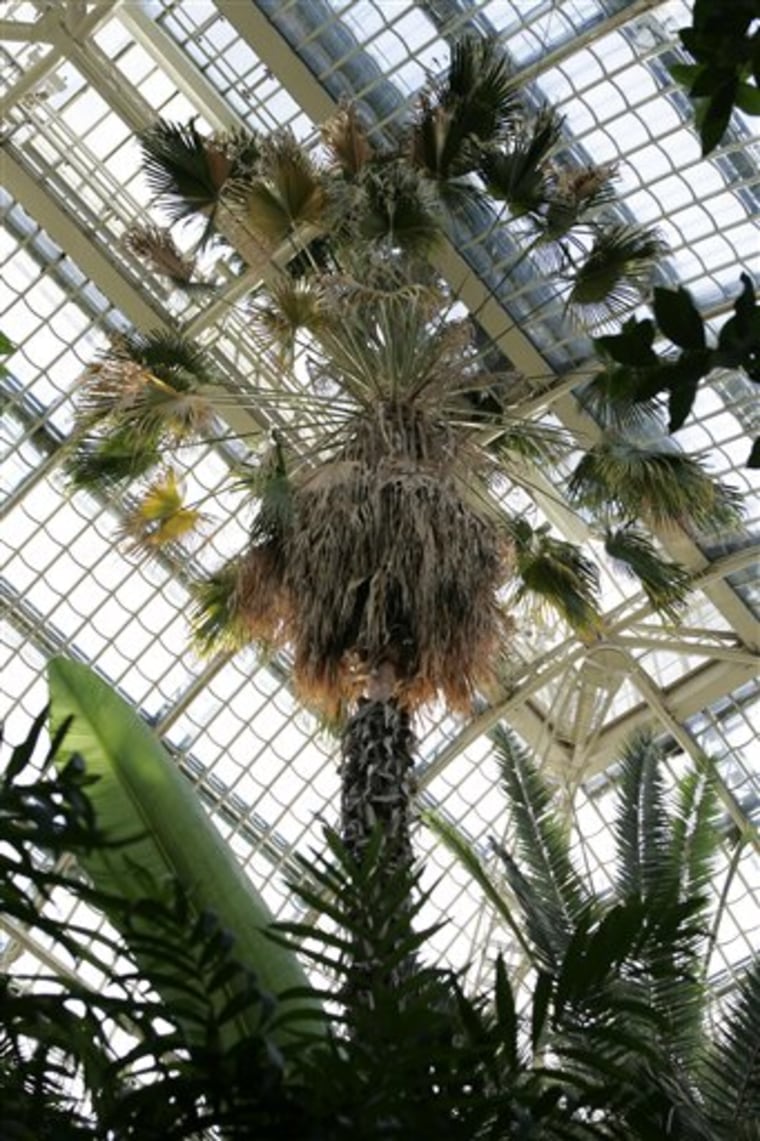It's outlived two world wars and the Austro-Hungarian Empire. Now Vienna's imperial "Sisi Palm" — a tree named for the late Empress Elisabeth — faces the ax.
Officials said Thursday the majestic 170-year-old Chinese fan palm must be chopped down before it breaks through the glass ceiling of Europe's largest greenhouse.
The palm has more than doubled in height to 82 feet over the past 18 years alone, and is getting too tall for its enclosure in the iron-and-glass Palm House on the grounds of the Schoenbrunn Palace.
Experts say the tree wouldn't survive if they tried to prune it — and if left alone, its huge spined crown threatens to destroy the greenhouse, an architectural treasure.
"You can't cut back a genuine palm," said Brigitte Mang, director of Austria's federal gardens. "It would either die or break through our glass house."
Each year, hundreds of thousands of tourists line up to view the tree, which was 44 years old when it was moved indoors in 1882 and named in honor of Sisi, the wasp-waisted wife of Emperor Franz Joseph I.
They also line up to tour the Sisi Museum in Vienna's Hofburg Palace, which is devoted to the empress' life and untimely death. She was fatally stabbed in 1898 by an Italian anarchist.
The imperial couple enjoys a cult following among Austrians and foreigners alike. Last week, local media were abuzz with reports that a Hollywood film, "Sisi," is in the works starring Catherine Zeta-Jones as Sisi and Tom Hanks as Franz Joseph.
Just a seed in 1838
The beloved palm — a seedling in 1838 — is part of an imperial tradition.
Sisi's tree once grew next to a similar palm that had honored her predecessor, Empress Maria Theresa, the only woman to lead the Habsburg monarchy.
Sisi was said to admire her palm and sit beneath it whenever she found herself pining for the Mediterranean, her favorite part of Europe.
But modern botanists knew the palm would run into problems. Its fate was sealed in 1990, when workers transplanted the tree from a giant urn to a hole in the ground dug deep below the Palm House floor — meaning it could not be moved.
Mang and Gerhard Tichy, the master gardener at Schoenbrunn, said officials delayed until virtually the last moment their decision to cut down the Sisi Palm next month.
No one, they concede, wants to see the tree go. But they're not about to let it ruin the Palm House, which was designed by the architect Franz Segenschmid.
Successor already in works
Austrian officials say it's the continent's largest glass greenhouse, and at 364 feet long, 92 feet wide and 82 feet high, the pavilion's green iron curves and 45,000 panes seem straight out of a Jules Verne novel.
The tree is slated to be felled Feb. 18. Tichy said it will have to be done carefully to avoid harming the dozens of other tropical plants crowding the climate-controlled Palm House.
If it's any consolation, palace gardeners are already cultivating a successor: a small Chinese fan palm.
They hope it will grow as quickly as Sisi's famous ankle-length hair and become a new centerpiece for the imperial greenhouse.
